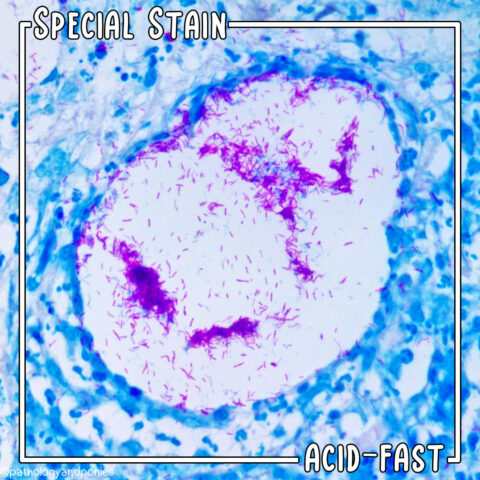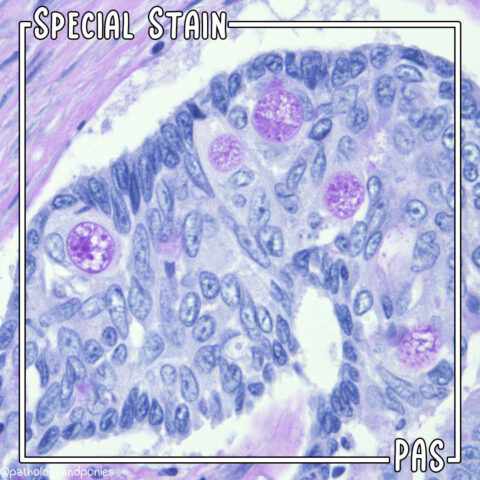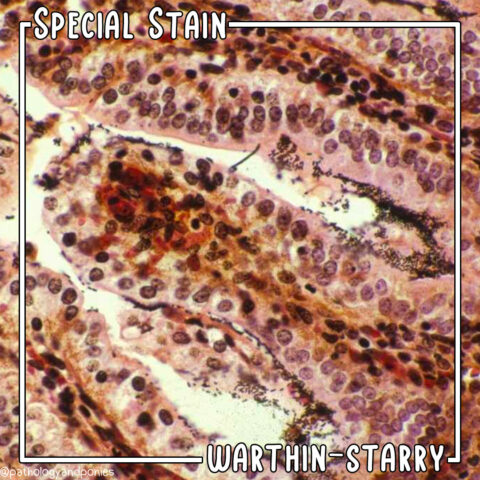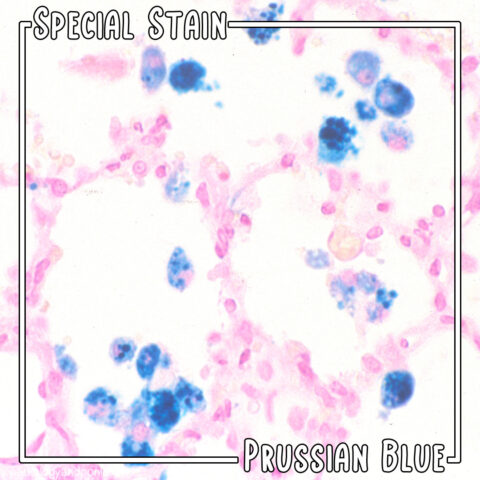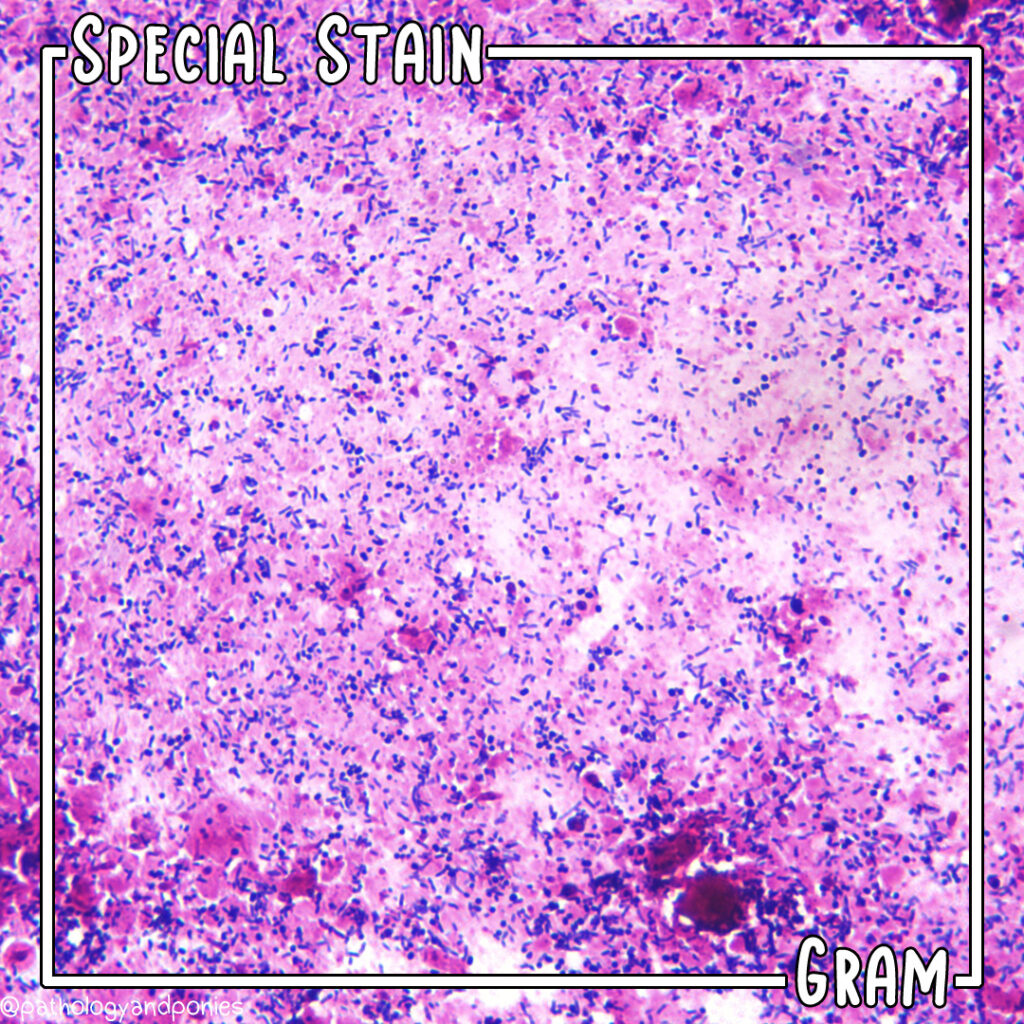
Today’s special stain is 𝐆𝐫𝐚𝐦 𝐬𝐭𝐚𝐢𝐧!
𝐖𝐡𝐚𝐭 𝐢𝐬 𝐚 𝐆𝐫𝐚𝐦 𝐬𝐭𝐚𝐢𝐧?
Gram stains are probably one of the most frequently requested special stains. This stain highlights 𝐛𝐚𝐜𝐭𝐞𝐫𝐢𝐚, which can be incredibly difficult to identify on our standard H&E stain! Not only does the stain help identify bacteria, it can also classify them into two categories: 𝐆𝐫𝐚𝐦-𝐩𝐨𝐬𝐢𝐭𝐢𝐯𝐞 and 𝐆𝐫𝐚𝐦-𝐧𝐞𝐠𝐚𝐭𝐢𝐯𝐞. Gram-positive organisms appear blue or black, while Gram-negative organisms appear red or pink. This classification can give the pathologist a clue about what species of bacteria might be involved.
This image is a milk sample from a case of 𝐦𝐚𝐬𝐭𝐢𝐭𝐢𝐬 (mammary gland infection) in a cow. The dark blue bacterial organisms shown were identified as 𝐓𝐫𝐮𝐞𝐩𝐞𝐫𝐞𝐥𝐥𝐚 𝐩𝐲𝐨𝐠𝐞𝐧𝐞𝐬 on bacterial culture.
Photo © Dr. Joe Rubin under CC BY-NC 2.0 Generic.

